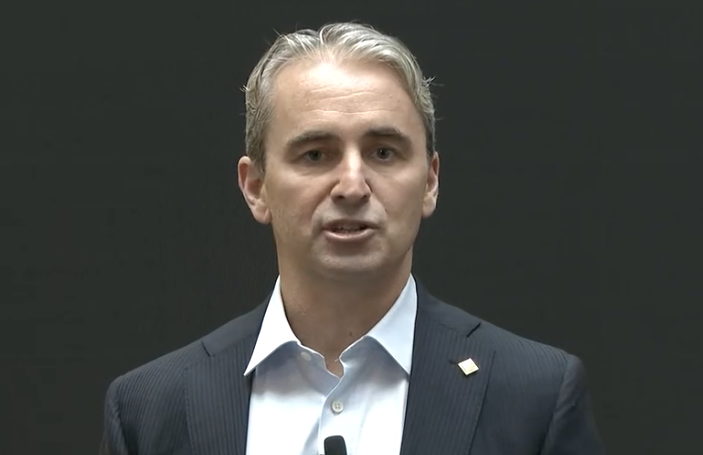
CBA CEO Matt Comyn
Commonwealth Bank has estimated that its share of the big banks’ home loan net interest income rose 50 basis points to 35.1 per cent in the financial year ending September 2023, as a result of its decision to prioritise profitability over market share in home lending last year.
That increase represented around A$80 million of additional net interest income, offsetting the impact of the loss of market share, the bank said.
CBA chief executive Matt Comyn said conditions in the home loan market were very challenging last year. The bank decided not to write unprofitable business and was prepared to give up share.
High-impact negotiation
masterclass
July 9 & 16, 2025
5:00pm - 8:30pm
This high-impact negotiation masterclass teaches practical strategies to help you succeed in challenging negotiations.
The bank’s Australian home loan share fell from 25.1 per cent to 24.5 per cent over the 12 months to December (based on Reserve Bank numbers). Mortgage lending in the December half was $67 billion – down from $77 billion in the December half 2022 and $72 billion in the June half last year.
Total home loans on the balance sheet fell 0.3 per cent from $652.2 billion in June last year to $650.5 billion in December.
Comyn said CBA has moved closer to the market in recent months, in response to an improvement in market conditions towards the end of the year. It continues to review its pricing but its position remains that it wants a return above the cost of capital on its mortgage origination.
In its financial report for the December 2023 half-year, released yesterday, the bank also details some of the steps it took to maintain growth in its mortgage book while focusing on profitability. It increased origination through proprietary channels, loaned more to investors and wrote more interest-only loans.
CBA originated 57 per cent of its home loans through proprietary channels in the December half – up from 51 per cent in the December half 2022. This compares with about 70 per cent of home loans being written by brokers industry-wide.
Lending to investors grew from 28 per cent to 37 per cent of new mortgage business over the same period, and the share of interest-only lending grew from 19 per cent to 24 per cent.
Comyn said all these moves were aimed at maintaining growth in areas where it could get a return above its cost of capital.
Fixed rate maturities complicated the situation. During the December half, $41 billion of CBA fixed rate home loans matured. Another $34 billion will mature in the six months to June. Comyn said the bank had a focus on retention but customers who had missed repayments or posed a higher risk in other ways were “refinanced out”.
The bank also focused on maintaining good credit quality. Home loans in arrears (overdue by 90 days or more) rose from 43 basis points in the December half 2022 to 52 bps in the latest half. This compares with a historical average of 65 bps.
The number of hardship cases rose 9 per cent in the six months to December.
The bank’s approach to home lending mitigated but did not stop margin erosion during the half. The net interest margin was 1.99 per cent – 11 basis points down from the margin of 2.1 per cent in the previous corresponding period and down 6 bps from the margin of 2.05 per cent in the June half last year.
Lower home lending margins, deposit price competition, deposit switching and higher wholesale funding costs all contributed to the lower margin.